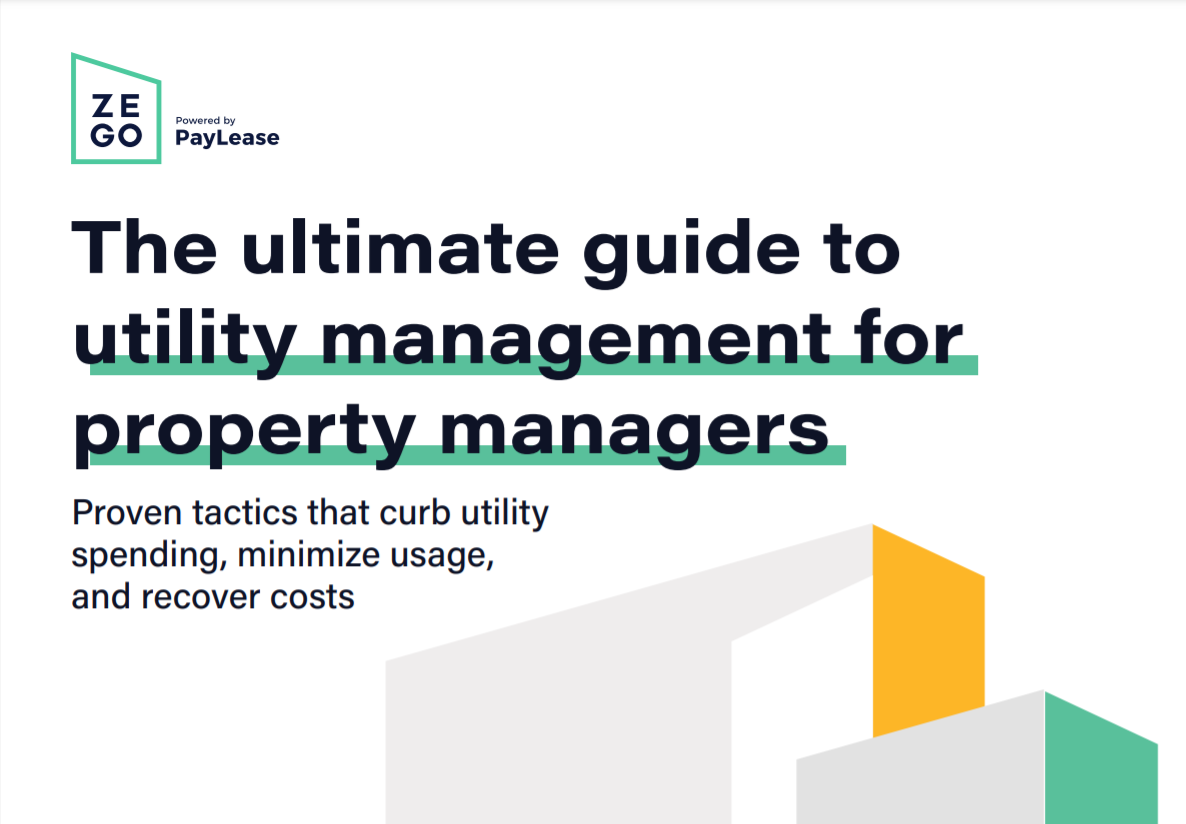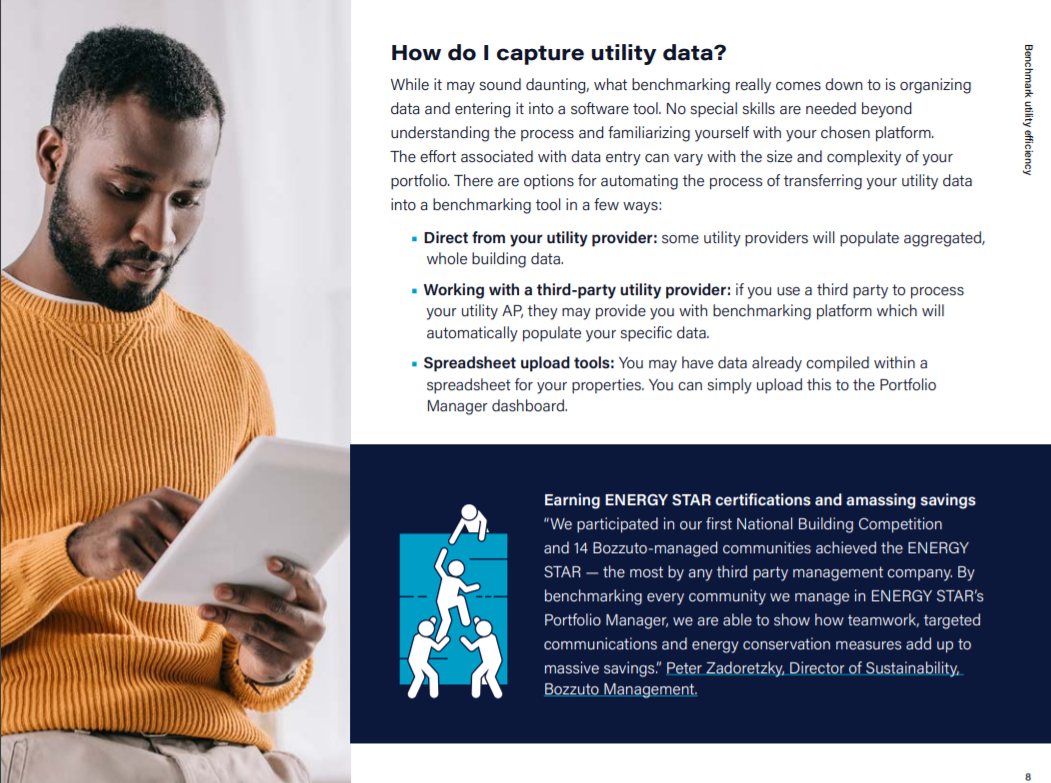What is RUBS? Ratio Utility Billing Explained
Ratio Utility Billing Systems
What is RUBS? RUBS stands for Ratio Utility Billing System and is a cost-effective and fair alternative to submeters.
RUBS is a popular utility management solution for multifamily properties and is used by property managers and landlords. It divides the bill among your residents based on certain criteria. Different utility types can often influence the RUBS formula a property uses.
What types of bills fall under RUBS?
While these bills can vary by property and local regulations, these are the types of typical bills included under RUBS:
- Water and sewer
- Trash or waste removal
- Gas or electricity
Now that you know which utilities can be included in a Ratio Utility Billing System, here’s how to put a RUBS program into practice at your properties.
How to RUB your residents
You’re out at a restaurant having dinner with several of your friends, and the check arrives. One person only had a salad, another skipped the appetizers, and a few didn’t touch the shared wine. Most likely, someone will leave for the night feeling like they paid for much more than they consumed.
Divvying the utility bill for a multifamily property can be a lot like dining with a large group of friends. How do you determine the best way to charge residents based on their utility consumption? If you’re lucky, your property is equipped with submeters, which will make it easy for you to know how much to charge each unit.
However, submeters aren’t feasible at every property, which leads many property managers to use RUBS when allocating resident utilities.
What is a RUBS program and how do I calculate utility charges?
If you are thinking about your apartment utility management and want to implement a RUBS (Ratio Utility Billing System) program, here are the different formulas and calculations to consider:
Get your custom resident billing ROI analysis
Maximize utility recovery and revenue with Zego’s Resident Utility Billing, a multifamily utility billing platform for property managers.
-
RUBS Formula #1: Occupants per Unit
This calculation evenly splits the utility bill between each occupant in a unit, and is commonly used for water bills. The logic behind this method is, if more people live in a unit, they will consume more of a given utility. For example, a single occupant in a one bedroom unit most likely uses less water than two people in a one bedroom unit.
Property management companies love using this allocation method as it’s a fair and effective RUBS system. It’s a clean split that makes sense to residents, and it solves the problem that the more people that live in an apartment consume more.
A difficulty can be figuring out how to adjust the allocation should the occupants per unit increase. For example, if a couple has a new baby, how should their rate be adjusted? Their new addition won’t be using as much as a grown adult. The other challenge is making sure that occupancy totals and data are always updated and accurate within your property management software.
-
RUBS Formula #2: Square Footage of Unit
Some property management companies calculate utility bills based on the square footage of a unit. This method is often used for gas bills. The logic behind this method is that the larger the unit, the higher its utility consumption will be.
Larger living spaces often correlate with higher heating/cooling prices. The gas needed to regulate the temperature in a 1,000 square foot unit will be much higher than in a 500 square foot unit.
Before committing to this formula, you should take into consideration each unit’s design. An apartment might be larger, but that does not mean it has more water appliances or occupants as smaller units, thus disproportionately allocating back.
-
RUBS Formula #3: Combination
You can also use a calculation that accounts for the unit’s total occupants and the square footage. Most of the time these two are split 50/50 split when generating the utility charge. The logic being: larger units and more occupants will result in higher utility consumption. While it has the benefits of each of the above methods, it also carries the pitfalls.
-
X-Factors
Adjusting for x-factors is crucial for making a fair allocation. What are examples of x-factors? Perhaps some units are equipped with a washing machine. Maybe you have units with more bathrooms, which will use more water, or units with fireplaces, which use more gas.
To solve for these variables, we simply add in a multiplier to ensure one resident is not paying more than their fair share. We might notice a washing machine uses 30% more water so we assigned it a factor of 1.3x per month.


FREE GUIDE
The ultimate guide to utility management for property managers
Read now to learn what strategies can be used to recover utility expenses from residents, where your company is racking up unnecessary costs when paying utility bills, and more!
What are the benefits of a RUBS program for utilities?
The main benefit of using a RUBS system to calculate resident utility charges is that it allows operators to recoup the maximum allowable utility costs from residents without investing in submeters. It can be easily integrated into existing utility billing systems, minimizing up front costs. This helps offset the overall operational costs of managing the property and maintaining its amenities.
Additional benefits of RUBS program for tenants include:
-
Fairness
RUBS utilities take a variety of factors into account including occupants, square footage, or other relevant considerations to allocate costs proportionately among residents.
-
Versatility
RUBS systems can be applied to almost all utilities, including water, electricity, gas, trash collection, and more.
-
Conservation
By using RUBS, residents gain visibility into their individual utility consumption and associated costs. This transparency fosters a sense of accountability and helps residents understand the impact of their consumption habits.
-
Efficiency
A RUBS system automates the utility billing process by eliminating the need for individual meter readings or separate billing arrangements for each unit. This reduces administrative overhead and streamlines the billing process for property management.
-
Flexibility
A ratio utility billing system allows property managers to adjust the allocation factors based on specific circumstances or changing needs. This flexibility ensures that the billing system remains adaptable to different apartment configurations and evolving utility usage patterns.
Why should I use a RUBS system my multifamily properties?
Regardless of which RUBS method is chosen, the benefits are the same—you’ll recoup more utility costs, have stronger expense forecasting, and see reduced utility consumption from your tenants. RUBS enables property managers and owners to accurately allocate and recapture utility costs, eliminating the need for costly meter installations and providing a fair and transparent approach to utility billing.
So, how will you choose to RUB your residents?
Maximize Utility Recovery with RUBS
Ready to implement a Ratio Utility Billing System at your properties? Schedule a demo with Zego to learn how RUBS can help you recoup utility costs, reduce consumption, and simplify billing.